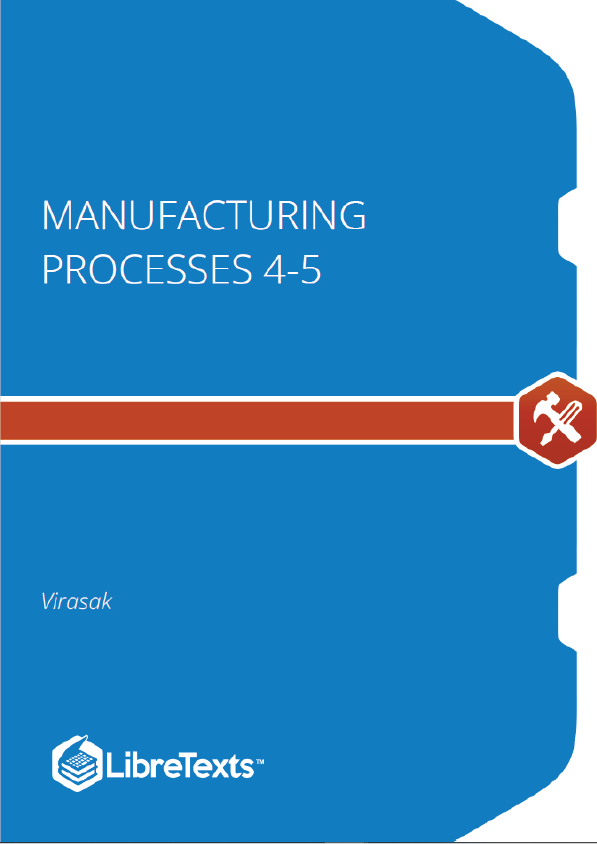This textbook provides an introduction to the important area of manufacturing processes. This text will explain the hows, whys, and whens of various machining operations, set-ups, and procedures. Throughout this text, you will learn how machine tools operate, and when to use one particular machine instead of another. It is organized for students who plan to enter the manufacturing technology field and for those who wish to develop the skills, techniques, and knowledge essential for advancement in this occupational cluster. The organization and contents of this text focus primarily on theory and practice.
Description
The milling machine is one of the most versatile machines in the shop. Usually they are used to mill flat surfaces, but they can also be used to machine irregular surfaces. Additionally, the milling machine can be used to drill, bore, cut gears, and produce slots into a workpiece.
The milling machine uses a multi-toothed cutter to remove metal from moving stock. There is also a quill feed lever on the mill head to feed the spindle up and down. The bed can also be manually fed in the X, Y, and Z axes. Best practices are to adjust the Z axis first, then Y, then X.
When an axis is properly positioned and is no longer to be fed, use the gib locks to lock it in place.
It is common for milling machines to have a power feed on one or more axes. Normally, a forward/reverse lever and speed control knob is provided to control the power feed. A power feed can produce a better surface finish than manual feeding because it is smoother. On long cuts, a power feed can reduce operator fatigue.
Tools For Tramming
A dial indicator is a precision tool used to measure minute amounts of deflection between two surfaces.
When tramming, a dial indicator attached to the chuck is used to determine the orientation of the mill head to the mill table. The same wrench used to tighten and loosen the quill can be used to adjust the various bolts on the mill head.
Tramming the Mill Head
Tramming ensures that the mill head is perpendicular to the mill table’s X and Y axis. This process ensures that cutting tools and the milling surfaces are perpendicular to the table. Proper tramming also prevents irregular patterns from forming when milling.
Spring Collets
- If a tool needs to be removed, lock the quill at the highest position.
- Next, loosen the drawbar with a wrench while using the brake.
- Make sure that the threads of the draw bar remain engaged in the collet. If they are not engaged, the cutter will fall and potentially be damaged when the collet is released from the spindle.
- To release the collet from the spindle, tap on the end of the draw bar.
- Finally, unscrew the drawbar off of the collet.
- To install a different cutter, place the cutter in a collet that fits the shank.
- Insert the collet into the spindle while making sure that the keyway aligns properly with the key in the spindle.
- Begin threading the draw bar into the collet while holding the cutter with one hand. Afterwards, use a wrench to tighten the drawbar while engaging the brake.











